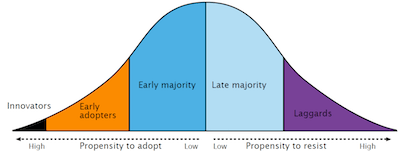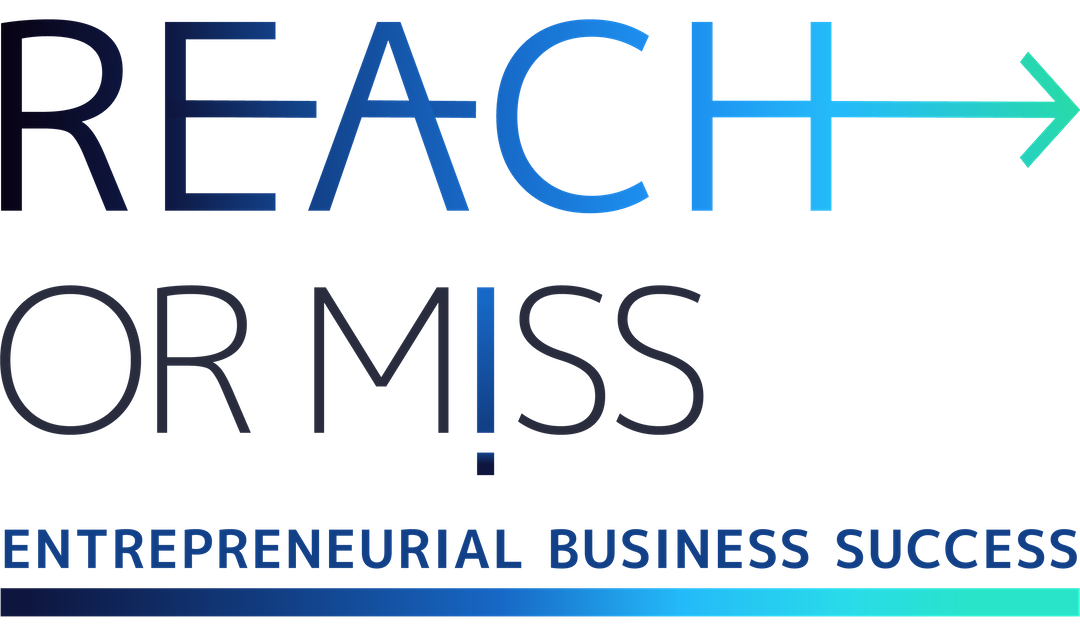How come successful entrepreneurs fail?

Because you can’t trust luck. But you can trust customers’ behavior, when tracked correctly.
I was lucky to interview Marc Hemeon on my podcast. After scheduling the interview, Marc sent me a message making sure I know he quit Tech and is no longer part of the entrepreneurial world.
Marc’s fantastic story is relevant for many entrepreneurs. “Today, I’m a ‘recovering entrepreneur’.” Marc told me. Last year, I closed a startup that I had founded in California; I sold my house and took a break from 20 years of tech. Right now I’m painting and doing art in the North Shore of Oahu.”
Marc didn’t tell me right away that just before this last startup, he co-founded two very successful startups; Fflick, which was acquired by Google and YouTube a month after the launch while they surprisingly experienced a hype they couldn’t even dream of. The second was a startup he launched with his friend, it was an app for luxury watches and within less than two years they merged with the global leading company in the world of luxury watches.
Marc said that after each of these successes he thought, incorrectly, that he knew how to succeed as an entrepreneur.
So, how come successful entrepreneurs fail, exactly like new entrepreneurs?
After starting seven startups, two of which were extremely successful, Marc was a very experienced entrepreneur:
- He knew how to raise money and did it successfully for all of his startups
- He has excellent technological skills and he is a professional designer
- And he definitely knows to work in a team successfully and manage employees
But Marc left one thing out of the equation!
And this is the most important part to any business’s success: How you are making money?
In other words:
The Customers
I’ve worked with hundreds of entrepreneurs over the last ten years exactly about this issue and I still can’t tell why so many entrepreneurs neglect the customers.
The research company CBInsight, have a famous study where they interview entrepreneurs about the reasons for their startup failure. The number one reason by far (42%) is “No market need” which means – we couldn’t find the customers that will use and pay for our product.
I would like to address the three main reasons that (based on my research) lead entrepreneurs to fail in attracting their customers, and I’ll try to offer simple steps to handle each challenge.
- How to find the right target audience to a product or service that doesn’t exist yet?
The obvious challenge is to find potential customers for – what I call in my lectures – a non-existing market. However, while there isn’t an exact market for your new (not yet existing) product, someone is doing something with the money and the time you want them to give you. Try to find (mainly through online search and chatting with people worldwide) the people that care about similar issues and learn what are they doing today.
Two things usually mislead entrepreneurs while looking for their potential customers.
Point of view
Your tendency to think of the customers from your own point of view is one of your biggest stumbling blocks. When we talk about marketing or sales, the successful ones are those who are able to overcome their own mindset and look from the point of view of those who are most likely to use or buy the product.
Two things can help you practice: The first one is to search, learn, and get deep into groups, forums, researches, and everything connected to the problem you are solving. Try to read what bothers those people, what they care about, how many of them there are, from where etc.
The second is to practice your ability to look at things from your potential customers’ point of view: Try and remember how you feel towards your good friend, your children or your siblings. Usually people are able to feel and identify with their friends or kids’ pain, happiness, fears etc. That’s the ability we want to use towards potential customers. Being able to “shut off” our own voice while trying to understand them (For the record, this is called empathy…).
The challenge of “heavy users”
Since we generally look to justify our new entrepreneurial business, we tend to focus on those who would need our product most, which are usually those who suffer most from the problem, what we call the “heavy users”, yet often those who suffer most from the problem we solve, and those who need it most are also those that might find it hard to trust a new unfamiliar solution and usually won’t be the first to take the risk and try a new service or product.
The solution is to learn and be aware to “Rogers’ Diversity Curve” for technology adoption. Roger’s curve suggests there are several levels of adopting a new product.

Rogers’ Diversity Curve
First, there are the innovators or the seekers – those who are looking for new features, new capabilities, and new products. They will probably be the first target audience and there are usually not many of them. What we are looking for are who those that are most likely to use our product and spread the word.
Second is the Early Adopters. Those who listen to the innovators and trend setters to understand, trust, use, and buy before everybody and his wife jumps on the bandwagon.
The early majority come next. They need to be convinced that it worth buying, while the late majority are those that will use or buy only after all or almost all their friends and relatives use it. The early and late majority are the biggest share of the buyers. The very last will be the laggards. Those who usually didn’t even hear of the new solution before it’s not new anymore.
Important note: One person can be among the innovative users for natural health products while being part of the late majority when it comes to fashion or to new mobile phones.
Once you will teach yourself to think of, and remember, the different levels on Rogers’ curve, you will be more precise and focused while looking for your target audiences.
Note: There are, of course, situations when you build your product for “yourself,” meaning something that you need or are looking for. In that case it’s easy, although you should be aware of other customers, you will usually understand the potential customers best.
- What are the exact words to use for defining your (unfamiliar) product? Which all the company must use frequently
Once we understand who our potential customers are, it will be quite easy to find the exact words you should use to define your product or service. But first, let’s understand why it is so important.
You and I and everyone who have chosen to be entrepreneurs chose to create or bring something new to the market (any specific market).
People think in paradigm. They model everything using ideas and thoughts they are already familiar with to understand something they don’t know.
One of the biggest problems of entrepreneurs is that they don’t have one clear definition for their product or service. Most of the time, the companies’ two founders don’t define their product with the same words.
So why is it so important? First of all because in marketing and sales, we know that it’s almost impossible to sell something that isn’t defined. Because we have to explain what the product is to each person and we will never be profitable because of the time and energy needed for just one sale.
And second, because we are dealing with a new and unfamiliar product or service that people managed to live without it until today, so they don’t have a habit of using the product yet. Moreover, sometimes it takes time for the potential users to understand the exact need. That’s why every word counts.
If we go back for a moment to the story of Marc Hemeon and his last company, Design Inc. Maybe another definition would attract much more users to use the platform. Often, we find that it’s not that there wasn’t a need, but there was no understanding of what the new product is and why they need it because the definition doesn’t speak to the consumers.
Looking for the exact definition of your product or service (3-5 words max) will be easier because you already know who the exact target audience is and how to attract them. You should think of their point of view, understand their need, and find the best words to define the product.
Note: We are not looking for a marketing slogan! We are looking for the exact sentence any sales person, employee, partner, or customer will use to answer the question: what is it? (for example: What is “Design Inc.”?)
- How to focus on one future strategy and give up all the other options
Here, we touch one of the biggest issues that lead so many entrepreneurs to failure. I’m talking about focus and consistency, or the lack thereof.
The most important law of marketing is the law of focus. You can’t reach three destinations at the same time. You can reach one. And you won’t reach it if you aren’t focused on reaching it. The flip side to the law of focus is the cruelest law of marketing: The law of giving up. You must decide what are you going to give up so you can focus on to reach your goal.
In order to focus, we must be sure we know what to focus on. And then, set goals to make sure you are moving in the right direction.
Most entrepreneurs change direction and strategy every few weeks. I’m not telling you to stick with the wrong direction because you have to focus. I’m telling you to use the tools you have to decide who your target audiences are and what you offer them. Then, you should create a plan to reach them, which channels and tools to use to expose your product’s existence and create awareness and so on, everything that marketing and sales should do to help you reach your goals.
There is risk in entrepreneurship. There is also risk in staying in a 9 to 5 job, which you don’t necessarily like and definitely don’t control.
However the one sure thing most entrepreneurs aren’t doing is focusing on the customers. After all, the money you want is in their pockets.
Marc Hemeon’s story isn’t over. He will find his next direction either by creating art and painting in Oahu, or by finding his next tech challenge. And we set a meeting next year, to follow-up and hopefully to hear of his new success.
[spp-player textabove=”Listen to Marc Hemeon’s interview on the REACH OR MISS Podcast” url=”http://origin1.podcastwebsites.com/994/768/2670/Ep-52-Marc-Hemeon.mp3″]
